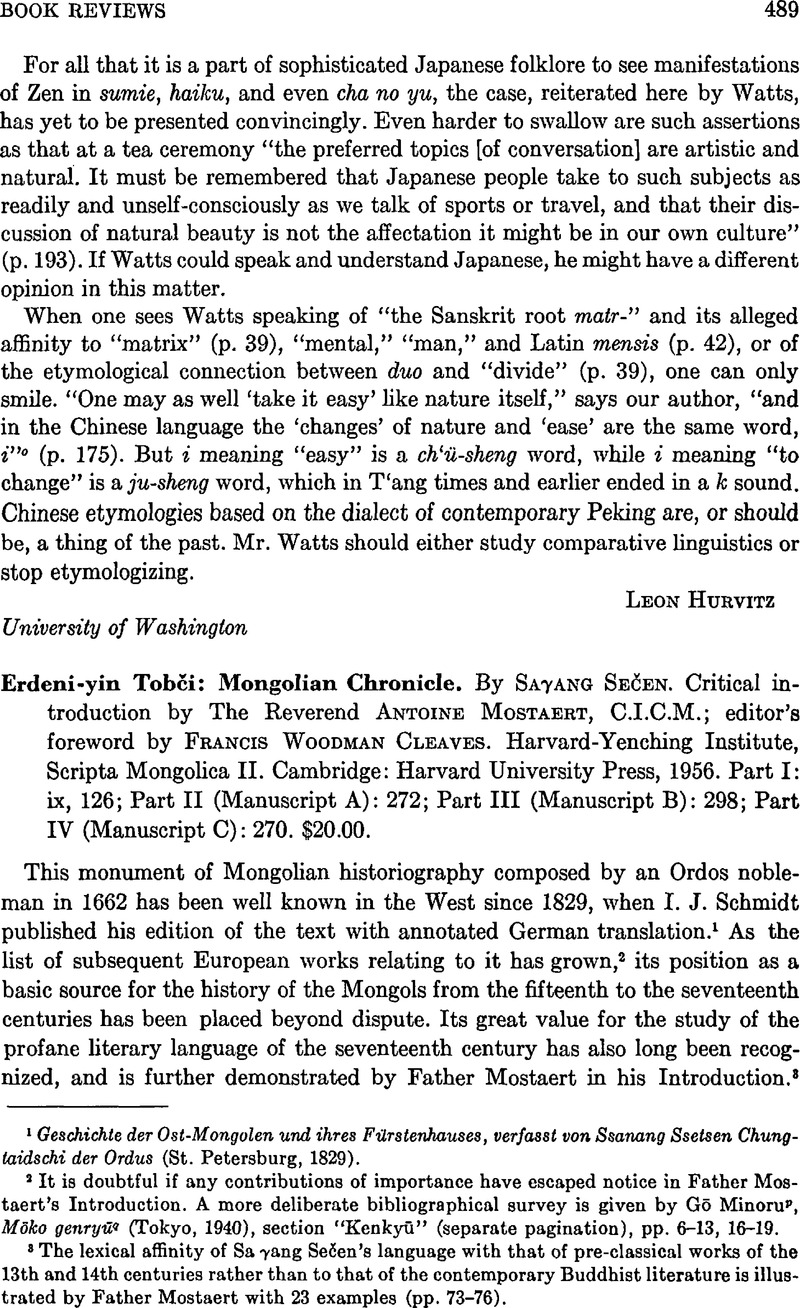No CrossRef data available.
Published online by Cambridge University Press: 23 March 2011

1 Geschichte der Ost-Mongolen und ihres Fiirstenhauses, verfasst von Ssanang Ssetsen Chungtaidschi der Ordus (St. Petersburg, 1829).
2 It is doubtful if any contributions of importance have escaped notice in Father Mostaert's Introduction. A more deliberate bibliographical survey is given by Gō Minorup, Mōko genryū (Tokyo, 1940), section “Kenkyū’ (separate pagination), pp. 6–13, 16–19.
3 The lexical affinity of Sayang Seč;en's language with that of pre-classical works of the 13th and 14th centuries rather than to that of the contemporary Buddhist literature is illustrated by Father Mostaert with 23 examples (pp. 73–76).
4 It was translated into Manchu in the Ch'ien-lung period, and thence into Chinese (Meng-ku yūan-liu). Erich Haenisch has published the Manchu text in transcription: Monggo han sai da sekiyen. Die Mandschufassung von Secen Sagang's mongolischer Geschichte (Leipzig, 1933). A Japanese translation of the Manchu version was made by Gō Minoru (op. cit.).
5 Eine Urga-Handschrift des mongolischen Geschichlswerks von Secen Sagang (alias Sanang Secen) (Berlin: Akademie der Wissenschaften zu Berlin, Veröffentlichung Nr. 25, 1955). Father Mostaert was able to take account of this publication only in an Additional Note (p. 77), where he corrects several inexactitudes in Žamcarano's treatment of the manuscript. In the several cases checked by this reviewer Father Mostaert's corrections of Schmidt's text are confirmed by this manuscript.
6 Mongol'skie letopisi XVII veka, Trudy Instituta Vostokovedeniya XVI. Moscow-Leningrad: Akad. Nauk, 1936.